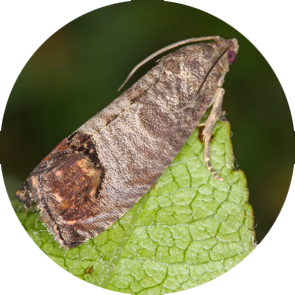


| Latin Name | Cydia pomonella |
| Common Name | Codling moth |
| Biology | Adult moths are active at night and sensitive to sex pheromones, laying eggs on fruits or leaves of apple, pear, and other trees. The larvae bore into fruits, tunneling through the flesh to form sinuous galleries; infested fruits tend to drop or rot, classifying this pest as a worldwide quarantined species. They produce 2-3 generations per year, overwintering as mature larvae in bark crevices or storage areas; they primarily damage fruit trees including apple, pear, peach, and apricot; global apple production regions. |
| Damage | This pest primarily damages fruit trees including apple, pear, peach, and apricot. |
| Distribution Regions | Global apple production regions |
| Monitoring | Pheromone lures mimic natural sex pheromones to attract male insects into specialized traps for population monitoring and suppression. As a core IPM component, monitoring enables early risk detection and targeted control. Mass trapping reduces mating opportunities to curb offspring populations. Protocols: ●Use only with matched traps. ●15-45 traps/hectare,replace/replenish every 4-6 weeks. ●Wear gloves or wash hands with detergent when switching lure types. ●Refer to trap-specific hanging instructions. |
| Recommended Traps | Delta Trap, Wing Trap |

Share your contact information to receive precision-matched pheromone solutions. Should our existing portfolio lack an optimal fit, our synthetic chemistry team will initiate custom development—from molecular structure design to scaled production.